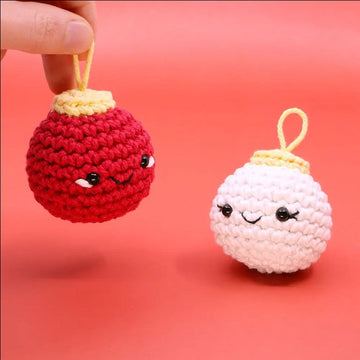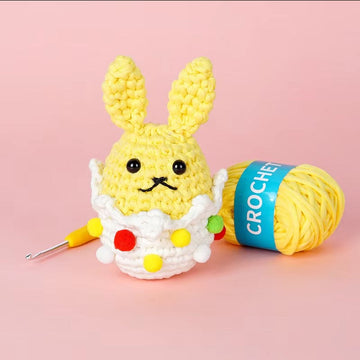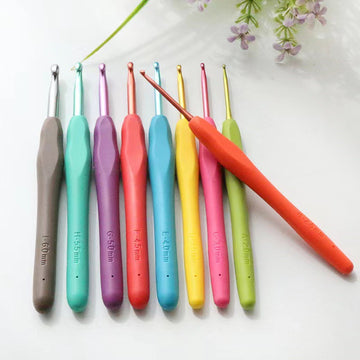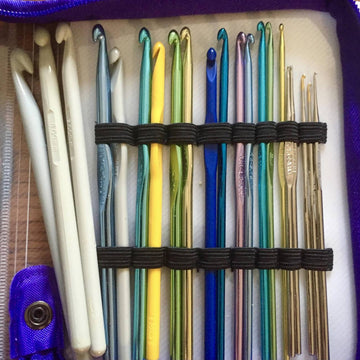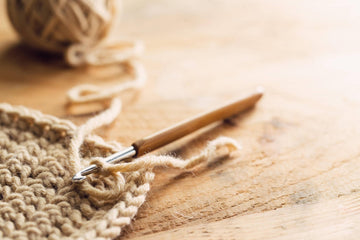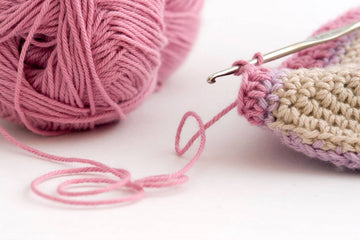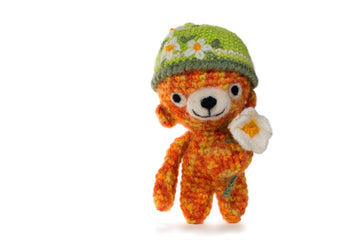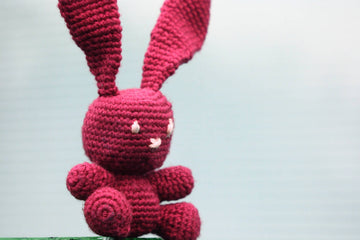Introduction: Why Choosing the Right Crochet Hook Matters
Crocheting is a beloved craft that combines creativity and relaxation. However, the success of your project often depends on one crucial tool: the crochet hook. Using the right hook in WOOHOBBY can make a significant difference in your stitching experience, from the ease of use to the final look of your project. Whether you're a beginner or an experienced crocheter, understanding the different types, sizes, and materials of crochet hooks will help you achieve the best results.
In this guide, we’ll explore everything you need to know about selecting the perfect crochet hook for your project. From ergonomic designs to material choices, we’ve got you covered.
Table of Contents
| Section | Subsection |
| 1. Introduction | Why Choosing the Right Crochet Hook Matters |
| 2. Types of Crochet Hooks | Aluminum Hooks, Ergonomic Hooks, Tunisian Hooks, Steel Hooks, Plastic Hooks |
| 3. Hook Sizes and Measurements | Understanding Metric and US Sizes, Yarn Weight Compatibility |
| 4. Hook Materials | Aluminum, Wood, Bamboo, Plastic, Steel |
| 5. Matching Hooks to Yarn and Projects | Fine Yarns, Bulky Yarns, Amigurumi, Wearables, Home Decor |
| 6. Ergonomic Considerations | Comfort, Hand Fatigue, Grip Styles |
| 7. FAQs | Common Questions About Crochet Hooks |
| 8. Conclusion | Final Tips for Choosing the Perfect Hook |
Types of Crochet Hooks
Aluminum Hooks
Aluminum hooks are lightweight, durable, and widely available. They’re perfect for beginners due to their smooth surface, which allows yarn to glide easily.
Ergonomic Hooks
Designed for comfort, ergonomic hooks feature padded handles or unique shapes to reduce hand fatigue. Ideal for long crocheting sessions.

Tunisian Hooks
These longer hooks are used for Tunisian crochet, a technique that combines knitting and crocheting. They often come with a cord for larger projects.
Steel Hooks
Steel hooks are typically used for fine yarns and thread crochet, such as doilies or lacework. They’re smaller and more durable.
Plastic Hooks
Lightweight and affordable, plastic hooks are great for beginners or bulky yarn projects. However, they may not be as durable as other materials.
Hook Sizes and Measurements
Understanding Metric and US Sizes
Crochet hooks come in various sizes, measured in millimeters (metric) or letter/number sizes (US). For example, a 5mm hook is equivalent to a US H-8. Always check your pattern for the recommended hook size.
Yarn Weight Compatibility
Different yarn weights require different hook sizes. For example:
Fine yarn (lace or fingering): 2-3.5mm hooks
Medium yarn (worsted): 4-5.5mm hooks
Bulky yarn: 6mm and larger hooks

Hook Materials
Aluminum
Lightweight and smooth, aluminum hooks are versatile and suitable for most projects.
Wood
Wooden hooks offer a warm, natural feel and are often used for their aesthetic appeal. They’re great for medium to bulky yarns.
Bamboo
Bamboo hooks are lightweight and eco-friendly. They provide a good grip, making them ideal for slippery yarns.
Plastic
Affordable and lightweight, plastic hooks are beginner-friendly but may not last as long as metal or wood hooks.
Steel
Steel hooks are durable and perfect for fine, delicate work like lace or thread crochet.
Matching Hooks to Yarn and Projects
Fine Yarns
Use smaller hooks (2-3.5mm) for fine yarns to create delicate, detailed stitches.
Bulky Yarns
Larger hooks (6mm and up) are ideal for bulky yarns, creating quick and cozy projects like blankets or scarves.

Amigurumi
For amigurumi, choose a hook slightly smaller than recommended to ensure tight, even stitches.
Wearables
For garments, match the hook size to the yarn weight and gauge specified in the pattern.
Home Decor
Medium to large hooks work well for home decor items like pillows or throws.
Ergonomic Considerations
Comfort
Choose hooks with padded or ergonomic handles to reduce strain during long crocheting sessions.
Hand Fatigue
If you experience hand fatigue, consider switching to an ergonomic hook or taking frequent breaks.
Grip Styles
Different hooks cater to different grip styles (pencil or knife grip). Experiment to find what feels most comfortable.
FAQs
What is the best crochet hook for beginners?
Aluminum hooks in medium sizes (4-5.5mm) are ideal for beginners due to their ease of use and versatility.
How do I know which hook size to use?
Check your yarn label or pattern for recommended hook sizes. Always make a gauge swatch to ensure the correct tension.
Can I use the same hook for all projects?
While possible, it’s best to match your hook to the yarn weight and project type for optimal results.
Are ergonomic hooks worth it?
Yes, especially if you crochet frequently or experience hand pain. They provide better comfort and reduce fatigue.
How do I clean my crochet hooks?
Wipe metal or plastic hooks with a damp cloth. For wooden or bamboo hooks, avoid water and use a dry cloth instead.
Conclusion
Choosing the right crochet hook is essential for a successful and enjoyable crocheting experience. By understanding the different types, sizes, and materials, you can match your hook to your yarn and project with confidence. Don’t forget to consider ergonomic options if you crochet frequently or experience hand fatigue.
Whether you’re working on a delicate lace shawl or a cozy blanket, the right hook will make all the difference. Happy crocheting!

